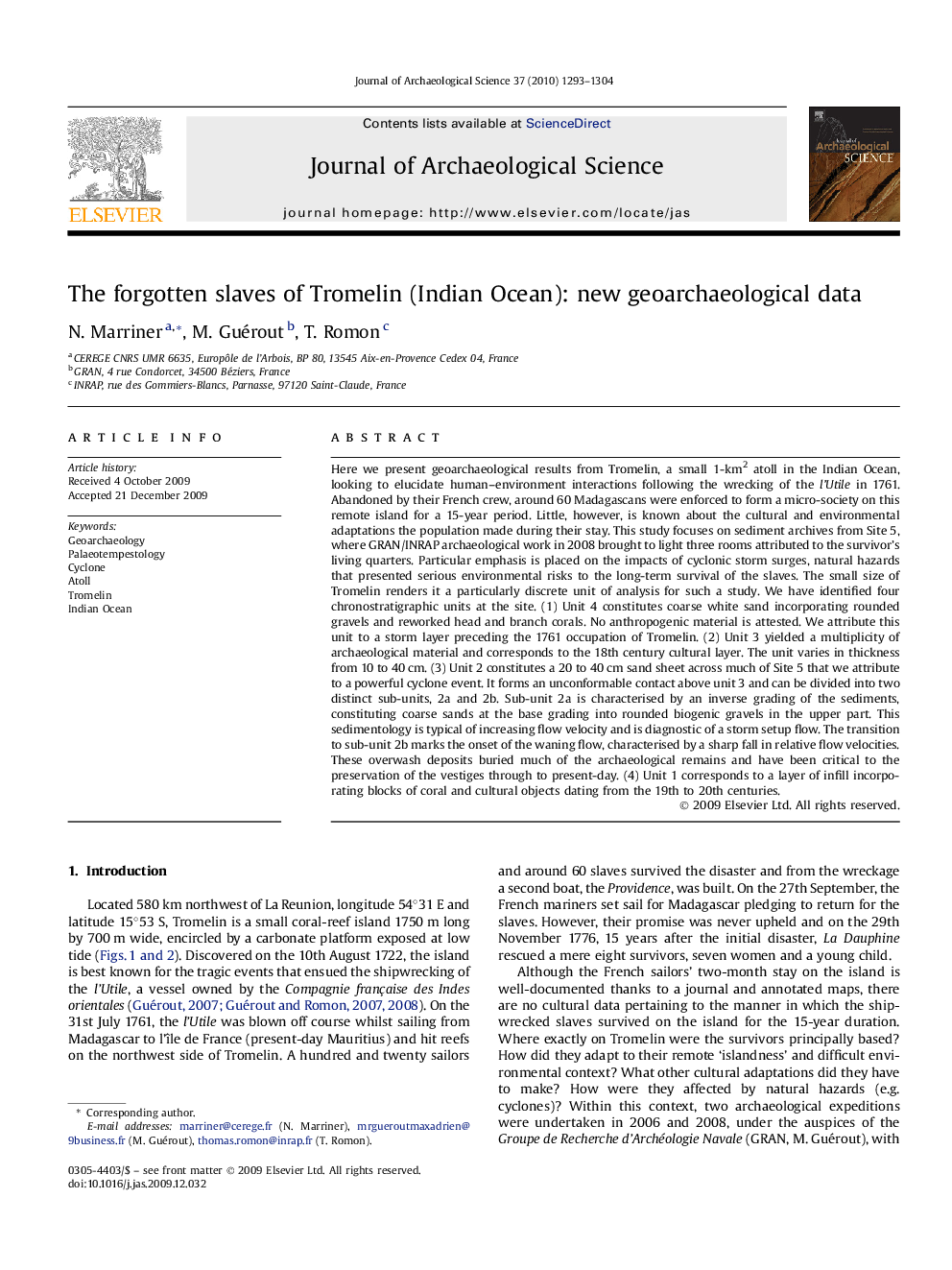| کد مقاله | کد نشریه | سال انتشار | مقاله انگلیسی | نسخه تمام متن |
|---|---|---|---|---|
| 1036754 | 943896 | 2010 | 12 صفحه PDF | دانلود رایگان |

Here we present geoarchaeological results from Tromelin, a small 1-km2 atoll in the Indian Ocean, looking to elucidate human–environment interactions following the wrecking of the l'Utile in 1761. Abandoned by their French crew, around 60 Madagascans were enforced to form a micro-society on this remote island for a 15-year period. Little, however, is known about the cultural and environmental adaptations the population made during their stay. This study focuses on sediment archives from Site 5, where GRAN/INRAP archaeological work in 2008 brought to light three rooms attributed to the survivor's living quarters. Particular emphasis is placed on the impacts of cyclonic storm surges, natural hazards that presented serious environmental risks to the long-term survival of the slaves. The small size of Tromelin renders it a particularly discrete unit of analysis for such a study. We have identified four chronostratigraphic units at the site. (1) Unit 4 constitutes coarse white sand incorporating rounded gravels and reworked head and branch corals. No anthropogenic material is attested. We attribute this unit to a storm layer preceding the 1761 occupation of Tromelin. (2) Unit 3 yielded a multiplicity of archaeological material and corresponds to the 18th century cultural layer. The unit varies in thickness from 10 to 40 cm. (3) Unit 2 constitutes a 20 to 40 cm sand sheet across much of Site 5 that we attribute to a powerful cyclone event. It forms an unconformable contact above unit 3 and can be divided into two distinct sub-units, 2a and 2b. Sub-unit 2a is characterised by an inverse grading of the sediments, constituting coarse sands at the base grading into rounded biogenic gravels in the upper part. This sedimentology is typical of increasing flow velocity and is diagnostic of a storm setup flow. The transition to sub-unit 2b marks the onset of the waning flow, characterised by a sharp fall in relative flow velocities. These overwash deposits buried much of the archaeological remains and have been critical to the preservation of the vestiges through to present-day. (4) Unit 1 corresponds to a layer of infill incorporating blocks of coral and cultural objects dating from the 19th to 20th centuries.
Journal: Journal of Archaeological Science - Volume 37, Issue 6, June 2010, Pages 1293–1304